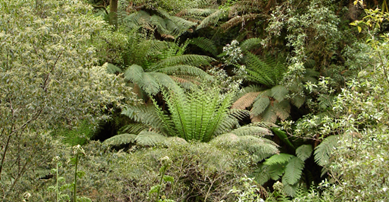Sustainability is a business-wide activity

Business-wide data are the foundation
As the world moves closer towards a new Global Biodiversity Framework, we are seeing a significant uptick in the number and type of organisations acknowledging the strategic importance of managing their interactions with biodiversity and nature.
From exploring science-based targets for nature to the buzz around the recently launched beta framework from the Taskforce on Nature-related Financial Disclosures, there is intense interest from business and finance in the assessment, reporting and target setting for nature-related risks and impacts.
Regardless of whether a company is aware of its potential nature-related risks or is just getting to grips with where and how it impacts and depends on biodiversity, the success of nature-positive strategies, targets and actions will in many respects rely on the availability and quality of data.
For over 15 years, we’ve worked with companies all over the world in everything from personal care to technology, and extractives to professional services. The thing that continues to surprise the most is that it’s normally not the biodiversity data that can pose the greatest challenge, it’s the company data.
From site to scale
Roll back the clock five or ten years in business and biodiversity, and when talking data, it was often at the site level. A defined area where the potential impacts of a business activity or development project could be mapped out and specific mitigation – and where necessary compensation – measures could be planned.
Fast forward back to today and a major difference we see – and a sign of the progress in this space – is the ambition for corporate-level approaches to biodiversity and nature. While site-based measures are still a must, these company-wide approaches are being designed to tackle impacts at the system or value-chain level. This can involve thousands of commodities, inputs, suppliers, communities, and connections that span the globe.
One data type that will be essential for all businesses is location. Nature-related risks and dependencies are location specific and corporate approaches to nature sustainability will need to take into account where and how operations and supply chain activities interact with nature and biodiversity. Both the TNFD’s LEAP approach and the initial guidance for science-based targets for nature from the Science Based Targets Network emphasise the importance of location assessment in understanding a business’s impacts and taking action.

Taking on nature sustainability at scale comes with a whole new set of possibilities for positive outcomes for the environment and communities. It also comes with a new set of challenges with data distributed widely, in different formats, units and styles. Companies will want to solve these challenges so that they can communicate and report on nature sustainability in a way that is clear, relevant and reliable.
So, what can they do to prepare? We find three common themes when it comes to organising and compiling information for nature sustainability.
- Find the data
Investigate and understand your physical footprint (where is it, how big is it?) and where you are sourcing from in your value chain (what volumes, where is it coming from?). There has been significant progress for some commodities (e.g. palm oil), but for others (e.g. steel) it might be harder. In the meantime, we can work with whatever data you do have, using global trade data or proxies, but the more accurate and precise the information, the more effective your targets and actions will be. - Compile the data
The information you can use to understand your nature risks and impacts might not all be in one place – and more often than not, it isn’t. The most useful data may not even be in the sustainability team who typically lead the work, but with procurement, finance, and other business units. Helping them understand why their data are useful for setting a corporate nature strategy will free up data and build an inclusive spirit. One of the great strengths of approaches such as nature positive, is that it should be a holistic, integrated programme, and that will mean reaching out across the entire company to build the right data foundations. - Standardise the data
Gathering data from the far corners of the company might mean it comes in all manner for styles and formats. Inconsistent units will challenge the setting of consistent actions. We have worked with clients to help them choose the best measures and units and get them in format, which facilitates efficient and replicable analysis.
While these data challenges may be universal, they are not a barrier to action. An initial baseline and targets can be set now, with a commitment to refine as more and better data are gathered. You can also work with others to make data gathering easier, whether by supporting efforts to make data on the location of certified commodity production public or by initiating sustainability initiatives in key commodities like steel.
Building the right data foundation for a nature strategy can take time – and time is of the essence for halting and reversing nature loss. By getting started now, businesses will take a crucial step towards developing a nature and biodiversity strategy and readying themselves to set science-based targets for nature or prepare for future reporting requirements.
Categories: Insight, Biodiversity Strategy
Make Nature Your Business
Find out how you can make nature your business.
